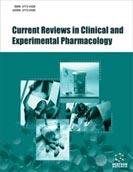Abstract
Background: Pyrogens are fever causing microbial and non-microbial constituents of variable chemical composition. Their presence in dialysis fluids, parenteral drugs, biopharmaceuticals, cosmetics and on solid medical devices is considered a major health concern worldwide. The main aim of this review is to summarize the scientific literature accumulated during the last few decades concerning health risks of pyrogens and regulatory requirements for quality control in parenterals and healthcare devices.
Methods: We searched the scientific databases for peer-reviewed research articles using keywords pyrogen, endotoxin, lipopolysachharide, lipoteichoic acid, depyrogenation, endotoxin detection etc. Results: Analysis of the published scientific literature indicates that endotoxins from Gram-negative bacteria are the most common pyrogenic contaminants in various biopharmaceutical drugs and healthcare products which are difficult to remove due to heat stable nature. Endotoxins and other pyrogens trigger adverse reactions in human body ranging from mild influenza-like symptoms and fever to organ failure, septic shock and even death. Considering their significant health risks, highly sensitive and accurate detection of pyrogens, particular endotoxin, and their removal to the satisfaction of regulatory requirements is a key aspect in the development of biopharmaceutical and healthcare products. Pyrogen testing is based on either a 100 year-old Rabbit Pyrogen Test (RPT), the most widely used Limulus Amoebocyte Lysate (LAL) test or the broad spectrum and biologically relevant Monocyte Activation Test (MAT). Conclusion: Analyses of the available literature indicates significant progress towards understanding the nature, mechanism of action and health risks of pyrogens. However, there is still a need to develop universally acceptable, sensitive and integrated detection assays, to emphasize the minimization of animals use and to strengthen the regulatory framework in biopharmaceutical and healthcare production facilities.Keywords: Fever, endotoxin, lipoteichoic acid, rabbit pyrogen test, limulus amoebocyte lysate test, monocyte activation test, depyrogenation.
Graphical Abstract
 22
22 1
1 1
1



